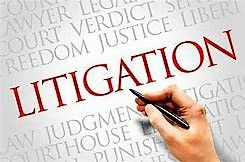The Appeal Process
- Brandie Rose DeVore

- Feb 11, 2019
- 4 min read

Who are the parties?
The losing party in a decision by a trial court in the federal system normally has a right to appeal the decision to the next highest court, the U.S. Circuit Court of Appeals.
· In a civil case, either side may appeal the verdict.
In a criminal case, the government cannot appeal a “not guilty” verdict, though they can appeal the sentence imposed.
· In a criminal case, the defendant may appeal their conviction, and also the sentence imposed.
The party who files an appeal, known as the appellant, must show that the trial court made a legal error that affected the decision in the case. The appellant prepares a written document, or brief, discussing the legal arguments. In the brief, the appellant tries to explain that the trial court made errors, and that its decision should be reversed. In this process, appellants cite previous court cases that support their point of view. The party defending against the appeal, known as the appellee, also submits a brief arguing why the trial court was correct in its decision, or why any error was not significant enough to affect the outcome of the case. Briefs of appellees discuss similar courts cases that support their point of view. How is the case decided?Appeals are decided by panels of three judges. The court of appeals does not receive additional evidence or hear witnesses; rather the judges make their decision based on the written record of the case in the trial court, the briefs submitted by the parties, and possibly oral argument.Although some cases are decided on the basis of written briefs alone, many cases are selected for an oral argument before the court. Oral argument in the court of appeals is presented by lawyers for both sides. Each side is given a short time – usually about 15 minutes – to present arguments to the court. The panel judges often ask questions of the lawyers during this time.The Opinion of the Court The decision is not announced at the time of oral argument. Rather, the three judges meet and vote on the outcome. One of the three judges will then write the formal opinion of the court, which may be published in law books. If the vote is 2-1, the 1 judge in the minority may choose to write a dissenting opinion explaining his or her reasons for disagreeing. Writing the opinion can take a few weeks or several months.The court of appeals, in its opinion, may:
· uphold, or affirm, the lower court decision, so the lower court decision would stand, and nothing would change.
· reverse, or overturn the lower court decision, in effect granting the appellant’s wishes.
· remand, or send the case back to the trial courts for some further action or a new trial.
Rehearing En Banc Sometimes, one of the parties requests a rehearing En Banc, that is, a re-hearing by all of the judges of the court of appeals in that circuit, rather than by the three-judge panel. The court of appeals can grant or deny the request for rehearing en banc. If the request is granted, the original opinion of the three-judge panel is vacated and removed from the record, and the new opinion of the court en banc will take its place.The U.S. Supreme Court The court of appeals’ decision is most often the final word in the case. Both parties have the right to appeal the decision to the United States Supreme Court, the highest court in the nation. The Supreme Court, unlike the court of appeals, is not required to take all cases. The party requesting the input of the U.S. Supreme Court files a Petition for Writ of Certiorari. If the U.S. Supreme Court “grants cert,” it has agreed to hear your case. Certiorari is usually granted less than 100 times per year. If the Supreme Court does not take the case, the decision of the court of appeals stands. If the Supreme Court does agree to hear the case, the process of preparing briefs and participating in oral arguments is very similar to that of the court of appeals. One main difference is that the entire Supreme Court, all nine Justices, participate in every decision unless they have recused themselves due to an ethical conflict with the case. All Justices who hear the case will discuss it and vote on the decision. The Chief Justice will assign one of the Justices in the majority to write the official opinion of the Court. A Justice may join in the majority opinion or may write a concurring opinion. A concurring opinion is written when a Justice agrees with the majority on the final result, but not on one or more points. Other Justices may join in the concurring opinion or may write their own concurrence. One of the Justices in the minority may also write a dissenting opinion, explaining their reasoning for disagreeing with the majority of the Justices. Other Justices may join in the dissenting opinion or may write their own dissent. In the rare case of a tie vote, the opinion of the lower court stands. A tie would only happen if an even number of Justices participated due to illness or recusal.








Comments